#april 16th 1889
Explore tagged Tumblr posts
Text
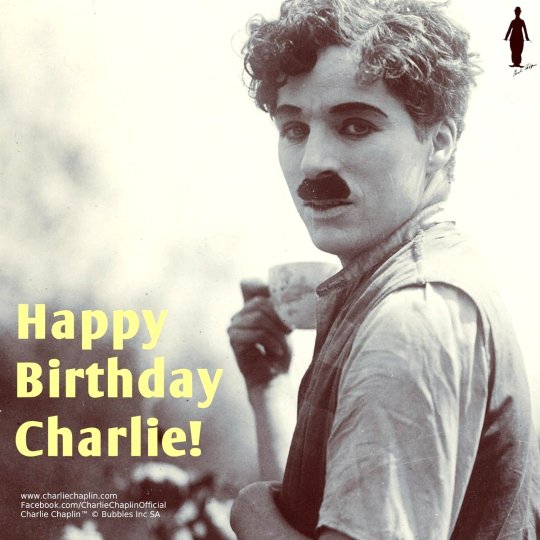
135 years ago a legend was born - April 16th 1889
70 notes
·
View notes
Photo
With Charlie, wife Oona, daughter Victoria and son Eugene.


Charlie Chaplin and his family gather at their home in Switzerland, in celebration of his 70th birthday. 16th April, 1959.
#charlie chaplin#oona o'neill chaplin#victoria chaplin#eugene chaplin#birthday remembrance#april 16th 1889
132 notes
·
View notes
Text
Black butler timeline
Here's a detailed breakdown of the timeline because why not
Confirmed dates will be marked down in red
Dates that are based on my speculation are marked down in blue
State: pre hiatus
Spoilers for the manga obviously
I will continue updating this one
1819: undertaker quitting
1830: 5th april: claudias birth
1851: 13th june: vincents birth
1858: 24th august: agnis birth
1863: 2nd april: jokers birth
1871: 15th march: snake’s birth, somas birth
1874: lizzys birth
1875: 14th december: the birth of the twins
1885: 14th december: vincent and rachels death, the kidnapping of the twins
1888: ciel getting kidnapped by azzuro
may-august: ciel getting hired for the jack the ripper cases
9th november: the last jack the ripper victims death and madam reds death
14th december: lizzy and francis visit ciel for his birthday
december-january: agni and soma come to england, the curry contest, agni trying to give himself in to the police
1889:
january-february: ciel joining the circus troupe and getting sick
9th february: the death of the circus troupe and baron kelvin
10th of february: ciel visiting the orphanage and ninas visit
march: the murders at the manor, snake being hired as a servant
17th april: the campania started it’s way to america
19th april: the bizarre dolls run free
20th april: ryan stokers death and the ship sinking
april-may: ciel joining weston college
3rd June: party before the match
4th June: cricket match and the midnight tea party
5th June: the p4 getting expelled
15th august: ciels trip to germany,
16th august: ciel being bedridden and sebastian serving sieglinde
17th august: sieglinde and the phantomtroupe escaping the forest
19th august: ciel bringing sieglinde and wolfram to england,
august: lizzy’s disappearance, ciel getting hired to investigate the music hall
15th november: agnis death, rciels appearance and ociels arrest order
16th november: ociel arriving in lau’s place
6th december: the phantomtroupe escaping london
7th december: mey rin arriving at the manor, bard arriving at the sanatorium, finny and snake arriving at the orphanage
8th december: ran mao getting the invitation, bard getting caught sneaking out by ada
9th december: snakes death, ran mao disappearance, bard confronting ada and lau, finnys escape from the orphanage with the kids,
10th december: mey rin completing her mission, bard getting injured
#black butler#kuroshitsuji#ciel phantomhive#sebastian michaelis#kuroshitsuji spoilers#black butler spoilers#real ciel#vincent phantomhive#soma asman kadar#black butler finny#kuroshitsuji finny#elizabeth midford#ran mao#madam red
109 notes
·
View notes
Text
May 31st, 1889: I think that if I get into the habit of writing a bit about what happens, or rather doesn't happen, I may lose a little of the sense of loneliness and desolation which abides with me ... [A] written monologue by that most interesting being, myself, may have its yet to be discovered consolations. I shall at least have it all my own way and it may bring relief as an outlet to that geyser of emotions, sensations, speculations and reflections which ferments perpetually within my poor old carcass ...
June 16th: Miss Percy from next door came in to see me ... and evidently looks upon me, funny as it seems, as a pitiable object. She asked me with the greatest conviction, if I didn't get 'awfully tired of reading!'—This pleased me greatly, it expressed so her round, bustling, cheery-in-the-morning personality ...
July 12th: My mind was suddenly flooded by one of those luminous waves that swept out of consciousness all but the living sense and overpower one with joy in the rich, throbbing complexity of life, when suddenly I looked up at Nurse, who was dressing me, and ... my brain made me exclaim, “Oh! Nurse, don’t wish you were inside of me!”—her look of dismay and vehement disclaimer—“inside of you, Miss, when you have just had a sick head-ache for five days!" ... However great we may seem to our own consciousness, no human being would exchange his for ours ... August 5th [about a suicide]: How heroic to be able to suppress one's vanity to the extent of confessing that the game is too hard.
March 22nd, 1890: The women ... here constantly ... marry again. 'Tis always a surprise ... I am only too glad to see creatures grasp at anything, outside murder, ... from which they fancy they may extract happiness, but it reveals such a simple organization to be perpetually ready to renew experience in so confiding a manner—playing the old tune with variations ... April 7th: I remind myself all the time of a coral insect building up my various reefs of theory by microscopic additions drawn from observation, or my inner consciousness, mostly.
— Excerpts from The Diary of Alice James
33 notes
·
View notes
Text
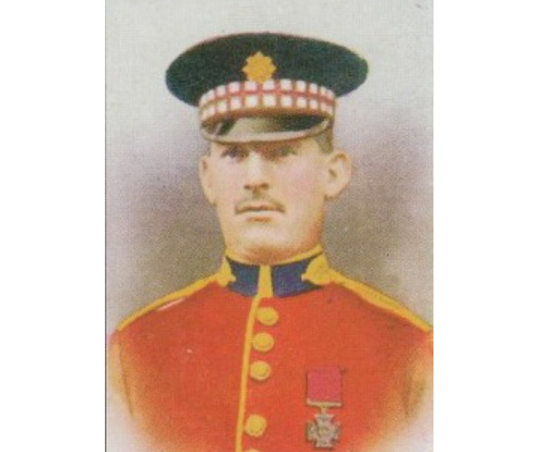

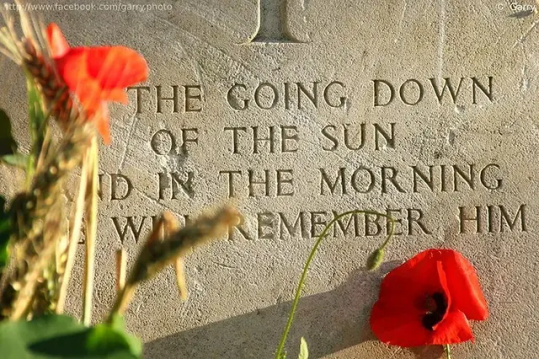
On 2nd April 1889, James MacKenzie was born.
Mackenzie was born at West Glen, New Abbey, Kirkcudbrightshire on 2nd April 18849. His father was Alexander McCortie Mackenzie, a mason. His mother was Marion Carnduff nee Millar. Alexander and Marion had married on 8th June 1883 in West Glen. The family moved to Maxwelltown when James was young. He had a brother and six sisters.
James was educated at Maxwelltown School and after school was employed at Locharbank Farm at Bank End, on his maternal grandparents farm at Barncleugh, Irongray and later as a joiner with Messrs Williamson in Maxwelltown.
When he enlisted on 16th February 1912, he gave his age as 23 although he was 27, to ensure he got in, and gave his occupation as a groom. He went to France with his unit, the 2nd Battalion, Scots Guards, arriving on 7th October 1914.
On 19th December 1914 at Rouges Blancs, France, Private MacKenzie rescued a severely wounded man from the front of the German trenches under a very heavy fire and after a stretcher party had been compelled to abandon the attempt. Private MacKenzie was killed later on that day while trying to carry out a similar act.
Sadly, Mackenzie’s body was not recovered following the action at Rouges Blancs, and he is commemorated on the Ploegsteert Memorial, Belgium. James had never married and the VC was sent to his mother on 9th March 1915. In addition to his VC, he was awarded the 1914 Star with Mons clasp, British War Medal 1914-20 and Victory Medal 1914-19. His mother later presented his medals to the Scots Guards Regiment and they are held by the Regimental HQ, Scots Guards, Wellington Barracks, London.
A memorial stone was laid in Maxwelltown in December 19th 2014 to commemorate Private MacKenzie by Dumfries and Galloway County Council.
9 notes
·
View notes
Text
Quick Chronology - August 16th
No time for writing up justifications right now, but for reference this is where my chronology is currently at. Bold stories have been recently moved/changed/etc.
GLOR - Summer 1875
MUSG - Spring 1879
STUD - Jan to Mar 1881
SHOS - May 1881
RESI - Oct 1881
YELL - Early Spring 1882
SPEC - Apr 1883
BERY - Feb 1884
COPP - Early Spring 1884
CHAS - Winter 1884
HOUN - Oct to Nov 1885
GREE - Summer 1886
VALL - Jan 1887
REIG - Apr 1887
SIGN - Jul 1887
CARD - Aug 1887
NOBL - Oct 1887
SCAN - Mar 1888
STOC - Jun 1888
NAVA - Jul 1888
SECO - Jul 1888**
CROO - Aug 1888
FIVE - Sep 1888
BOSC - Spring 1889
TWIS - Jun 1889
ENGI - Summer 1889
DYIN - Nov 1889
IDEN - Sep 1890
REDH - Oct 1890
BLUE - Dec 1890
FINA - Apr to May 1891
(Great Hiatus: May 1891 to April 1894)
EMPT - Apr 1894
WIST - May 1894
NORW - Aug 1894
SILV - Sep 1894
GOLD - Nov 1894
REDC - Dec 1894
SOLI - Apr 1895
3STU - May 1895
BLAC - Jul 1895
BRUC - Nov 1895
VEIL - Early 1896
MISS - Feb 1896/7
ABBE - Feb 1897
DEVI - March 1897
SIXN - Jun 1898
DANC - Jul 1898
SUSS - Nov 1898
RETI - Summer 1899
PRIO - May 1901
LADY - Summer 1901
THOR - Oct 1901
3GAR - Jun 1902
ILLU - Sep 1902
BLAN - Jan 1903
MAZA - Summer 1903
3GAB - Summer 1903
CREE - Sep 1903
LION - Jul 1907
LAST - Aug 1914
9 notes
·
View notes
Text
So I updated some stuff and also realized I never shared my thoughts on the real names of my Humanized characters, so...yeah I'm doing that now. Note: some of this does not line up with stuff I wrote earlier because I redid some lore after losing my documents and writing. Also note that the AU starts in 1921, so you can use their birthdates to calculate their ages at the start of the AU.
Stars:
Ten Cents: Theodore 'Theo' Elliott, born October 31st 1903
Big Mac: Arran MacCallum, born January 7th 1890
OJ: Ellis Jones, born June 6th 1867
Top Hat: Richard Payne, born July 23rd 1893
Warrior: Duncan MacCallum, born December 11th 1895
Hercules: Hazel Elliot, born May 1st 1896
Sunshine: Shannon Howell, born September 15th 1903
Grampus: Samuel 'Sam' Gibson, born December 30th 1871
Zeds:
Zorran: born July 2nd 1894
Zebedee: Gabriel Quinn, born August 28th 1883
Zak: Zachary Fletcher, born September 17th 1881
Zug: Balázs Willis, born November 10th 1884
Zip: Amos Willis, born April 1st 1900
Zinnia: born February 14th 1897
Others:
Lillian 'Lillie' Grey, born May 16th 1897
Bluenose: Harrison Smith, born March 28th 1873
Boomer: Bridget O'Connell, born January 13th 1890
Sea Rogue: Morgan Fisher, born November 3rd 1889
#this is tugs#tugs humanized#tugs star fleet#tugs zed stacks#there's some references and easter eggs in here#some you might recognize#if you do by all means send in what you think they are
10 notes
·
View notes
Text



[ID: Tags reading “#charlie chaplin died the year star wars a new hope was in theaters” and then search results for Charlie Chaplin, comic actor and filmmaker, born on April 16th 1889 and dies on December 25th 1977, and Star Wars Episode IV - A New Hope, released in 1977. /End ID]
the 20th century is crazy what do you mean that airplanes didnt exist in 1900 and by 1999 Futurama was airing
#JRR Tolkien also died in 1977#and there was a period of 6 years between 1924 and 1930 when Arthur Conan Doyle and Rod Serling were both alive#image
4K notes
·
View notes
Photo

HAPPY BIRTHDAY, CHARLIE CHAPLIN! [04/16/1889 - 12/25/1977]
Photo of Charlie Chaplin | 1932
#charlie chaplin#1932#1930s#happy birthday#famous birthdays#celebrity birthdays#born in 1889#died in 1977#april 16#april 16th#black and white#comedian#actor#comedy#silent#1930s menswear#vintage menswear
52 notes
·
View notes
Text
Roméo Robespierre is just such an awesome name
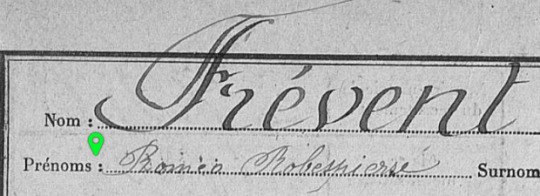
FREVENT Roméo Robespierre, born on the 17th August 1900 in Béthune (Northern France, not far from Arras), was working in a restaurant in 1921. He was a frail man; discharged from military service in 1922 for “muscular deficiency” and again in 1940 for tuberculosis. He died in 1948, probably of tuberculosis. His mother, Gabrielle Adèle Frévent, was a single mother. Gabrielle was a seamstress born in 1878; she had many siblings and notably a little brother named Maximilien Robespierre, 12y younger than her (born in 1889), who died when he was only 19 months old. She probably was honoring his memory in naming her own son Robespierre. (source)
Her older brother Louis Constantin FREVENT, born in 1872, also had a son he named Maximilien Robespierre (born in 1898) who himself had a son also named Maximilien Robespierre (born in 1921).

FREVENT Maximilien Robespierre, born on the 21st May 1898 in Bully (Northern France), was an engine/locomotive driver in a coal mine in 1918. He was only 2 years older than his cousin Roméo, but that made him old enough to be a WW1 veteran. He was enrolled on the 16th April 1917 (not even 19y old), and only discharged and sent home the 27th May 1920. The 24th January 1919 he was accidentally burnt on his face and hands by flares. (source)
Interestingly, their family name is also the name of the Northern town of Frévent, where Philippe Le Bas was born.
20 notes
·
View notes
Text



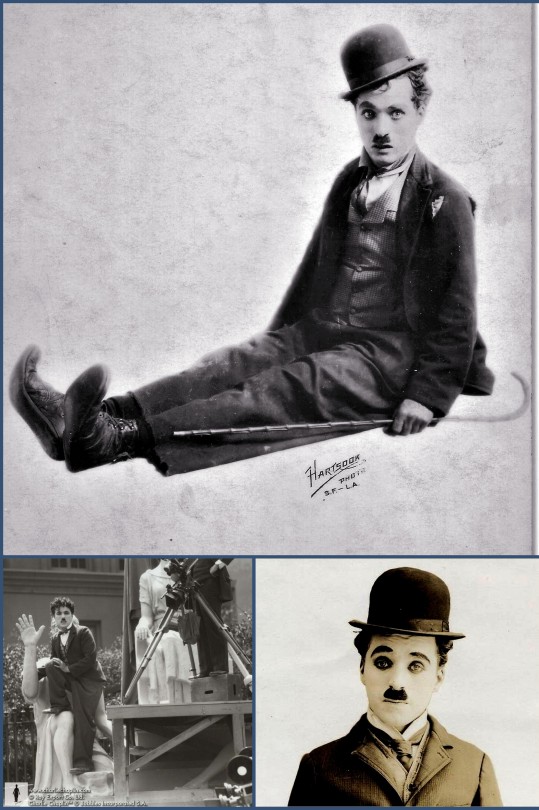
Charlie Chaplin birthday remembrance April 16th 1889
Through the decades from a young boy of 10 to a man in his 80′s
One of the greatest artist to come out of Hollywood, he created an immortal character in “the little tramp” that was and still is loved the world over.
Charlie Chaplin led a long life dying close to 89, it was full and very eventful - with many chapters and yes unfortunately scandals. He always stayed true to who he was - he did not go along to get along - this sometimes made life very difficult for him especially for times he lived in.
Though he became massively wealthy he never forgot where he came from, he quite often went back to where he grew up as a very poor child in Victorian South London.
23 notes
·
View notes
Video
The gif upper right from his 1916 film "The Rink".
Happy Birthday 🎁 Charlie Chaplin 🌹
47 notes
·
View notes
Text
Dating Disney: Beauty and the Beast

Beauty and the Beast features my favorite love story and my favorite Disney Princess, so it holds a very special spot in my heart. So, it’s worth looking into the film to decide when the Movie is supposed to be set.
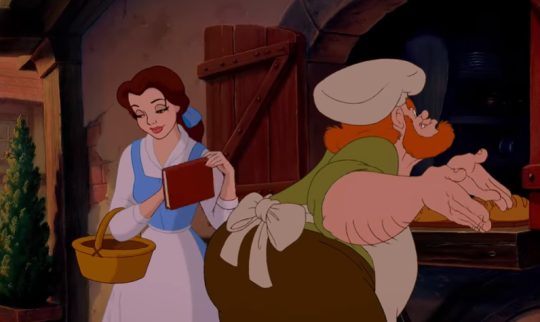
During the opening musical number “Belle”, Belle is telling the Baker about the book she’s been reading. She’s clearly describing Jack and the Beanstalk, the earliest version being the tale of “Jack Spriggins and the Enchanted Bean” in 1734. But she also deliberately mentions an ogre, not a giant. Near as I could find, the only version with an ogre was written by Joseph Jacobs in 1890, making Belle nearly contemporary to modernity. Belle’s excitement over the book is likely a sign that this is a new story.
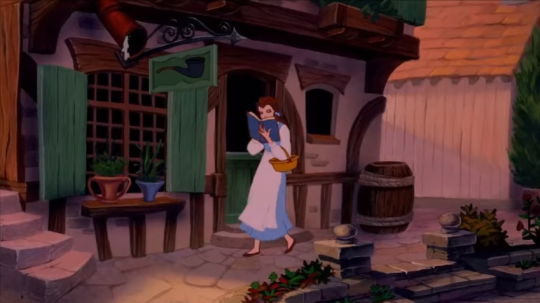
During the same musical number, we see a sign depicting a tobacco pipe, but unlike with the Calabash pipe from the Little Mermaid movie. I could place it to possibly be a Billiard type, but the exact era of creation escapes me. However, tobacco pipes have been around as long as Tobacco has been introduced to European trade, starting in the 16th century.
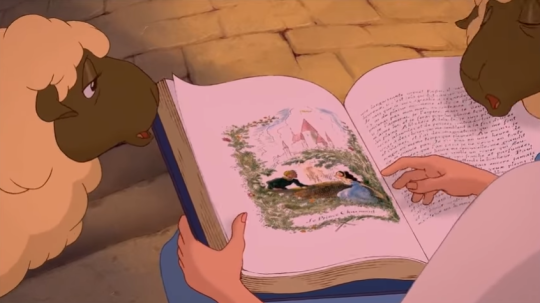
The history of colored printing goes as far back as the 16th century, and there are illustrations from the early 1700s with an impressive variety of color that help establish a stronger time period. The book also shows the words Le Prince Charmant or Prince Charming. Prince Charming started being used in 1697 in Charles Perrault’s version of Sleeping Beauty, although there, Prince Charming was not a name. Rather, Perrault stated that the Prince was charmed by her words. The first story to use Prince Charming as a name is the Tale of Pretty Goldilocks. It was written at some point in the 17th Century by Madame d’Aulnoy, but in her version the hero was named Avenant. It wasn’t until 1889 when Andrew Lang retold the story that Avenant was dubbed as Charming. One year later in 1890, Oscar Wilde used the term “Prince Charming” sarcastically in his novel “The Picture of Dorian Gray”, meaning that the term had gotten its more modern meaning by this point in time.

Gaston’s musket is a Blunderbuss, which was invented in the early 1600′s and remained popular through the 18th century before falling out of fashion in the middle of the 19th century. However, considering Belle states that this is a backwards town and Gaston is an old-fashioned, Primeval man, it’s possible he’s using a largely outdated weapon.

While there are no street lamps in the city, we can see in the background lanterns on the sides of buildings, which might allude to the movie taking place before the invention of gas lamps. However, gas lamps were invented in 1809, and if the version of Jack and the Beanstalk is from 1890, then by all accounts the town should have gas lamps. What this amounting evidence is leading me to believe is that the film is directly following the plot of the original fairy tale.

In the story, Beauty’s father is a merchant who loses his fortune due to a storm destroying his cargo. They’re forced to live on a farm until the merchant stumbles upon the Beast’s castle and kick starts the plot. In the opening song, Belle says “every morning’s just the same, since the morning that we came, to this poor, provincial town.” This could mean that she grew up in a much more modern, urban, and progressive town. Possibly even Paris. But that after Maurice suffered severe financial trouble, he was forced to move them to the small, backwards town that was practically living an entire century behind the rest of France, which is why she’s so bored and unimpressed by the little town. It helps explain why she’s so eager to want to get out of this town and see the world. She wants to be part of the modern world again.

Interestingly, I can support this theory with background information. According to some of my research, Belle’s village was based on the little town of Riquewihr, France, which still looks like it did in the 16th century to this day. So the idea that Belle’s little village lacks so many modern elements could be a nod to the architecture of this sleepy French village that has remained largely untouched by the march of time. Hence why it looks more like something out of the 1700s despite the many elements from the 1800s being present.

During the song “Be Our Guest”, Lumiere dances with a match stick. Match sticks were invented in 1805. Assuming the film still takes place in the 1890s, this would be concurrent with the other evidence we’ve seen thus far. Later in the same song, the silverware makes an Eiffel tower, which was constructed in 1889. Since Jack and the Beanstalk was written after that, it still fits within the suspected time frame.

During the climax of the battle, Cogsworth is wearing military garments reflective of Napoleonic styles. Napoleon was coronated in 1804 until 1814, had a brief return to power in 1815, and eventually died in 1821. So this is also congruent to the established time period.
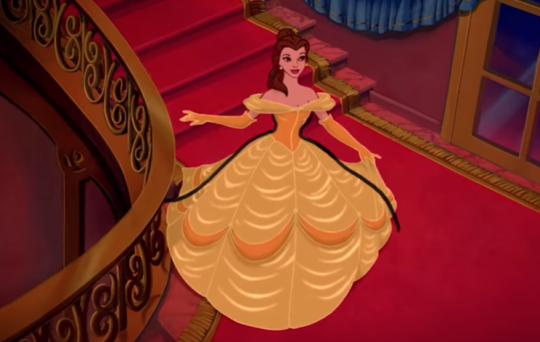
In the Youtube Video “Fashion Expert Fact Checks Belle from Beauty and the Beast’s Costumes” by Glamour, April Calahan, a Fashion Historian from the Fashion Institute of Technology directly noted that Belle’s yellow gown lacks the shape of a proper 18th century dress, and more closely resembles the shape of 19th century dresses, fitting into the evidence that’s been mounting in support of a late 19th century setting.

As a part of his primary costume, Lefou wears a waistcoat and tailcoats, which came into vogue in the 1800s, namely from the 1840s through the 1850s.

But if the film is set in the 1800s, how can the Beast still be a prince after the French Revolution? Well something worth noting is that when he finds out that Belle isn’t coming to dinner, the Beast storms through the halls to her room as Cogsworth calls after him as “Your Eminence” and “Your Grace”. The address of “Your Eminence” is reserved for Cardinals of the Roman Catholic Church, and is an ecclesiastical style of address. “Your Grace” is noticeably an English style of address, but it’s being used by Cogsworth who is British, so I can chalk that up to just part of his culture. Although it was used for British monarchs, it fell out of use during the reign of King Henry VIII (1509-1547) and after that, the use of “Your Grace” became used to address archbishops and non-royal Dukes and Duchesses. Now clearly the Beast is not a cardinal or a bishop, especially if he is looking for the love of a woman to make him human, since it’s forbidden for Catholic priests to marry. So clearly that is not what is meant here. But the other answer actually does hold a bit of weight. Beast’s father was in fact, a Duke. So how is the Beast a prince? He’s not. Not entirely. See, there’s more than one kind of Prince in French nobility. There’s a Prince du Sang, or a Prince by Blood. Effectively, the Crown Prince, the sons of ruling monarchs. But the title is also given to lords in charge of a Principality, one of the smallest territorial sizes. The Beast’s principality probably only extends to having power over the little unnamed village. And with it being after the revolution, Beast might not even have the proper use of his title anymore. He’s effectively a rich kid in a fancy house with no real authority or power. He’s just old money from a by-gone era of human history. But if Beast’s address of “Your Grace” is accurate, that would mean that he’s a non-royal Duke, meaning he would not likely have been executed during the Revolution, as his family would have essentially been governors or senators than actual monarchs. They just had jurisdiction over a small piece of the Kingdom of France and reported back to and obeyed the orders of their King. Thus, he would not have been important enough to be killed or chased out of power by the townsfolk.
CONCLUSION

The movie is set between the late autumn and early-to-mid winter of 1890. Although the snow is gone when Belle returns to the village, the trees are still bare, signaling that it may just be unseasonably warm, though it could be the very early spring of 1891 between the receding of the snow and the blossoming of new spring foliage. Between the books, clothing, and references made, my conclusion is that Belle is a very modern girl living in a backwards little town stuck in the past, thus why a village in 1890 looks so completely lacking in modern technology despite the era. The Prince is nothing more than a fancy title as the son of a Duke, and he likely has very little if any actual government authority. Essentially, Belle married into wealth, not power, and will never be a proper queen, and I’m not sure if the wife of a lord ruling a principality is a princess or not, but I suspect the answer is no. Making Belle, like Mulan, a Disney Princess who did not marry royalty, was not born royalty, and thus, cannot be called a Disney Princess. She’s definitely a noblewoman, but she’s not royal by any means.
SETTING: Riquewihr, France
KINGDOM: The French Republic (France)
YEAR: Autumn, 1890 - Spring, 1891
PERIOD: The Third Republic (1870-1940)
LANGUAGE: French
#dating disney#disney#beauty and the beast#belle#beast#gaston#lumiere#cogsworth#mrs potts#chip#maurice#lefou#historically accurate#historically accurate disney#la belle et la bête#la belle et la bete#france#french#french history#19th century#fashion history#historical costumes#disney princess#tale as old as time#napoleon bonaparte#riquewihr
66K notes
·
View notes
Text
Martha’s Masterlist
Explicit = 18+ ONLY!
❤️🔥 = Smut; 😈 = D/s dynamics; 💖 = Fluff; 🌧 = Angst; 🎵= Song fic
All writings have full warning lists at their starts.
Dave York:
In a vaguely chronological order…
Headcanons
On His Hands (❤️🔥) Explicit; 1059 words; gn!reader; smut
Always Him (❤️🔥) Explicit; 2407 words; f!reader; smut
Senses (Dave’s First Time) (❤️🔥😈) Explicit; 1575 words; gn!reader; sub!Dave; smut
4am (💖) Teen; 861 words; gn!reader; domestic!Dave; fluff
Read My Lips (❤️🔥😈) Explicit; 1459 words; f!reader; sub!Dave; smut
Distraction (❤️🔥😈) Explicit; 1301 words; gn!reader; sub!Dave; smut
Lasting (❤️🔥😈) Explicit; 1434 words (2 endings: 1064/1147); gn!reader; sub!Dave; smut
Panic (❤️🔥😈💖) Explicit; 1273 words; afab!reader; sub!Dave; smut, fluff
Try Again (❤️🔥😈💖) Explicit; 1918 words; afab!reader; sub!Dave, smut, fluff
Perfect (❤️🔥😈) Explicit; 1157 words; f!reader; sub!Dave; smut
Good Vibes Only (❤️🔥😈💖) Explicit; 1445 words; gn!reader; sub!Dave; smut, some fluff
Sweet Punishment (❤️🔥😈💖) Explicit; 1653 words; f!reader; sub!Dave; smut, some fluff
Can’t Wait to be Home (❤️🔥😈💖) Explicit; 1309 words; gn!reader; sub!Dave; smut, some fluff
Coming Home (💖) General; 605 words; gn!reader; domestic!Dave; fluff
Paintball (💖) Teen; 581 words, gn!reader; domestic!Dave; fluff
Paintball Fallout (❤️🔥💖) Explicit; 673 words; f!reader; smut, fluff
Paintball Retribution (❤️🔥😈) Explicit: 989 words; gn!reader; sub!Dave; smut
Paintball Payback (❤️🔥😈💖) Explicit; 1532 words; gn!reader; sub!Dave; smut, fluff
Role Play (❤️🔥😈💖) Explicit, EXTRA WARNINGS; 2408 words; gn!reader; sub!Dave; smut, some fluff
Date Night Dancing (💖) General; 633 words; gn!reader; domestic!Dave; fluff
Other characters:
Be Alright - Frankie ‘Catfish’ Morales (💖🎵) General; 839 words; gn!reader; fluff
Coffee & Cowboys - Jack ‘Whiskey’ Daniels Chapter 1 - Mature; 1600 words; f!reader; some angst (🌧) Chapter 2 - Mature; 1119 words; f!reader; angst (🌧) Chapter 3 - Mature; 1331 words; f!reader; angst (🌧) Chapter 4 - Mature; 1331 words; f!reader; angst (🌧) Chapter 5 - Mature; 1112 words; f!reader; some angst (🌧) Chapter 6 - Mature; 1222 words; f!reader; angst (🌧) Chapter 7 - Mature; 1163 words; f!reader; some angst (🌧️) Chapter 8 - Mature; 1889 words; f!reader; a lot of angst (🌧️) Chapter 9 - Mature; 1894 words; f!reader; so much angst (🌧️) Chapter 10 - Mature; 1226 words; f!reader; angst (🌧️) Chapter 11 - Mature; 1533 words; f!reader; some angst (🌧️)
List updated: 16th April 2023
#Martha writes#Martha’s Masterlist#fics#pedro pascal character#Pedro character#pedro pascal#jose pedro balmaceda pascal#dave york#frankie morales#frankie ‘catfish’ morales#jack ‘whiskey’ daniels#agent whiskey
36 notes
·
View notes
Photo

Charlie Chaplin was born today, April 16th in 1889. Check this blog!
27 notes
·
View notes
Text
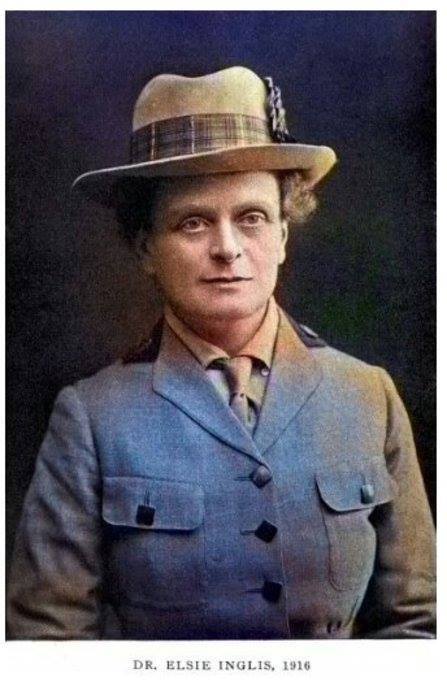



16th August 1864 saw the birth in India of Elsie Maud Inglis.
Elsie's family originated from originated from Kingsmills, Inverness-shire, her father,John, was in the service of the East India Company, although he was opposed to the imperialist policies of the 1870s. John retired and moved his family to Tasmania for two years before moving to Edinburgh in 1878. From 1878 to 1882, Inglis attended the Edinburgh Institute for the Education of Young Ladies.
When she was eighteen, Inglis attended a finishing school in Paris. Inglis knew she wanted to pursue a career in medicine and fortunately in 1886 Sophie Jex-Blake opened the Edinburgh School of Medicine for Women, where Inglis began her medical training. However, a student rebellion in 1889 led Inglis with the support of her father and his influential friends to establish a rival school, the Medical College for Women.
Inglis studied at the Glasgow Royal Infirmary for eighteen months before qualifying as a licentiate at the Colleges of Physicians and Surgeons in Edinburgh and Glasgow.
Inglis’s first position was medical officer at Elizabeth Garrett Anderson’s New Hospital for Women in London. Inglis held a short post in Dublin before returning to Edinburgh in 1894 where she opened a general practice. In 1899, Inglis graduated MB CM from Edinburgh and was appointed lecturer of gynaecology at the Medical College for Women, in partnership with Jessie Macgregor, opened a small hospital for women and children in 1894.
In 1904, Inglis’s small hospital moved to the High Street and was renamed The Hospice. In 1905 Inglis was appointed senior consultant of the Bruntsfield Hospital, which merged with The Hospice in 1911.
Inglis was nearly fifty in 1914 when war was declared, but her zeal and patriotism led her to offer her services to the War Office, only to be denied. Not deterred, Inglis sought to form independent hospital units staffed by women. An appeal for funds and support soon attracted more than just suffrage supporters. Inglis gave an inspiring speech in October 1914 at Kingsway Hall on ‘what women can do to help the war.’ Funds poured in for the new organization, the Scottish Women’s Hospitals for Foreign Service (SWH) and both the French and Serbs accepted the offer of all female medical units. The first unit left for France in November 1914 and the second went to Serbia in January 1915. Inglis went to Serbia in 1915 as the chief medical officer.
In the autumn Serbia was invaded and Inglis’s hospital was taken over by Germans. She was interned until February 1916 when she was sent home. Upon her return home, Inglis advocated for aid in Serbia. On 3 April 1916, Inglis became the first woman to be decorated with the order of the white eagle. Attempts over the next couple of years to found hospitals and aid Serbia were tried and failed. Inglis remained with her unit in Romania until September 1917 when it re-joined the Serbian division.
Inglis knew she had cancer, and by the end of September was unable to work as a surgeon, although she continued to direct the unit. Although the political situation was deteriorating rapidly, Inglis refused to leave until the Serbs were transferred out of Russia. When the unit finally left, Inglis sent a telegraph home saying, ‘Everything satisfactory and all well except me.’ Inglis and her unit landed in Newcastle and the following day, 26nd November 1917, in the presence of her sisters, Inglis died. Before her body was interned in Dean Cemetery, Inglis’s body lay in state in St Giles’ Cathedral. The SWH continued its work for the duration of the war, sending out more units and raising money for the work. Remaining funds were used to establish the Elsie Inglis Memorial Maternity Hospital in Edinburgh in July 1925.
Elsie Inglis has been honoured many times since her death, most notably on a stamp in Serbia, on a Clydesdale Bank £50 note and most recently on the centenary of her death in November 2017, as seen in the fourth pic.
6 notes
·
View notes